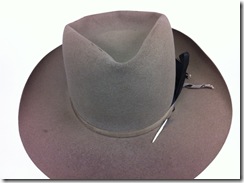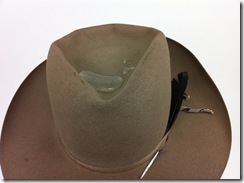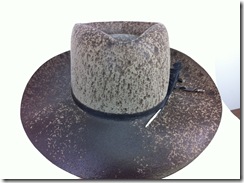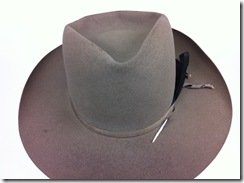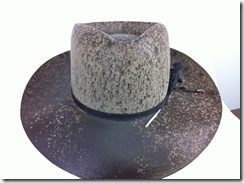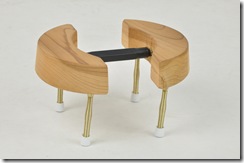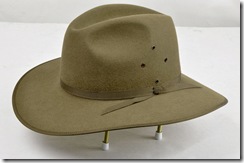We’ve posted another video on YouTube. This is for anyone interested in learning how to replace their fall and/or cracker.
If you still don’t want to do it yourself, you can have us do it for you.
We’ve posted another video on YouTube. This is for anyone interested in learning how to replace their fall and/or cracker.
If you still don’t want to do it yourself, you can have us do it for you.
Falls and crackers take the brunt of the wear from whip cracking. Over time, the end of the fall will wear off. When it gets down to 12-18 inches, it needs replacing.
Leather falls also stretch and should be replaced when they have become noticeably thinner than the end of the thong. In addition, the kangaroo strands adjacent to the fall will, in time, break because of the sharp flexing at this point. The fall should be replaced as soon as the first strand breaks.
People often ask the difference between red and white falls. Neither one is better than the other. Red hide falls tend to hold their thickness but eventually break. On the other hand, white hide falls stretch more but need watching to prevent them from getting too thin.
We get many questions on how to replace a whip fall. For whips with the thong strands intact, it’s quite easy! If the strands of the whip are damaged, the process is a little harder, but you can do it with a little patience. Here is a link to the instructions at davidmorgan.com.
If you wish to have us change it for you, you can check out our service here.
Update:
We now have a video that demonstrates a whip fall replacement. Click on the YouTube Icon in the bottom right corner of the screen to see all of our videos.
Three additional videos are now available at the David Morgan Channel on YouTube.
In the first video, David explains the theory on trimming a kangaroo skin.
In the first paring video, David explains how and why to pare 4-strand round work.
In the second paring video, David explains how and why to pare 6-strand (and above) round work.
LEARN MORE ABOUT:
We’re often asked if you can wear an Akubra in the rain. The answer is a definite, “Yes”! There are no powders on an Akubra, so you don’t have to worry about streaking. Nor do you need a plastic rain cover—that merely keeps the felt from breathing properly and makes your head uncomfortable.
When you first buy your hat, you’ll notice that the water beads on the felt. Akubra treats the felt, which makes it water resistant for several years. After the treatment fades, you will still have a quality, water-resistant hat. The rain will soak into the felt, but it will not leak.
David has had his Bushman for about thirty years. He usually wears this hat on his daily walks. And with Seattle boasting 158 days of rain per year, he needs one.
Below are a few shots of David’s hat before and after a walk. You can be certain that your Akubra will hold up just as well!
David’s, “Bushman”, about 30 years old.
Water will still pool at the top, but at this age, it will get wet, but not leak. Newer hats which still have the treatment will not soak into the felt.
Back from a walk. The hat is soaked, but the water did not get David’s head wet.
Care instructions:
If your hat gets wet, do not heat it. Heat will shrink the felt, as well as the leather. Stand the hat upside down on its crown, or hang on a hook in a cool place and let it dry naturally. Wet felt retains the shape in which it dries, so make sure the brim and crown are shaped as you want them before drying.
For other information on hat care, please visit our site.
LEARN MORE ABOUT:
In this video, David and Will Morgan show you first how to remove a hat band that is stitched to the felt, then how to add a different hat band.
How hard is it to bash your Adventurer? Not as hard as you think! David and Mike show you how a little steam is all you need to prepare you for your next adventure with Indiana Jones.
LEARN MORE ABOUT:
The Indy Bash with Close-Up Photos
Akubra hats are designed to protect you from the sun and rain. The felt is dyed and no powders are added. This means that you do not have to worry that your hat will streak if it gets wet.
When you wear your hat in a brief shower, the water will first bead up — in a light rain, you may never see the felt absorb the water. In a heavy shower or a long walk in the rain, the felt will get wet. However, the water will not seep through the hat. Felt provides good insulation when wet, so you will remain comfortable.
Whenever your hat gets wet, let it air dry. Do not put it near a heat source, since heat may shrink the hat. Hang it on a hook, if possible. If you do not have a hook, rest it on its crown. Leaving a hat on its brim will flatten and distort the brim.
Below we’ve pictured David’s thirty-something year old Bushman. He wears it on his daily walk. In the Pacific Northwest, a hat is essential in the winter.
David’s dry Bushman.
Back from a walk, nice and wet.
LEARN MORE ABOUT:
Many people ask how to store their hat when it isn’t in use. The most common ways are to use a hook or set the hat on its crown. Both will work fine. But for long term storage, we recommend keeping a hat stretcher in the hat. This prevents the hat from shrinking over time from disuse. You can easily set the hat on its crown and put the stretcher inside. David uses a second method.
Put door stops on the hat stretcher. This way the hat can remain sitting upright. The brim will remain above the surface so it won’t bend over time.This also works when the hat gets wet. The entire hat can rest on the stretcher and the top of the hat will dry along with the rest.
LEARN MORE ABOUT:
